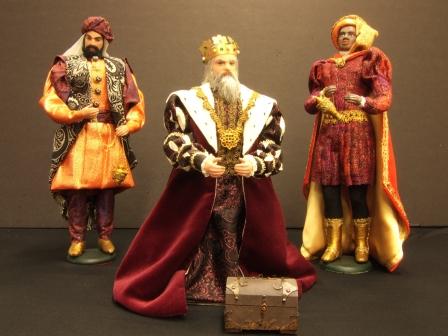Poland
Poland
The following Nativities are each displayed in a unique permanent setting created by Marian Library Crèche Collection volunteers. The descriptive text for each was written by Father Johann Roten, S.M.
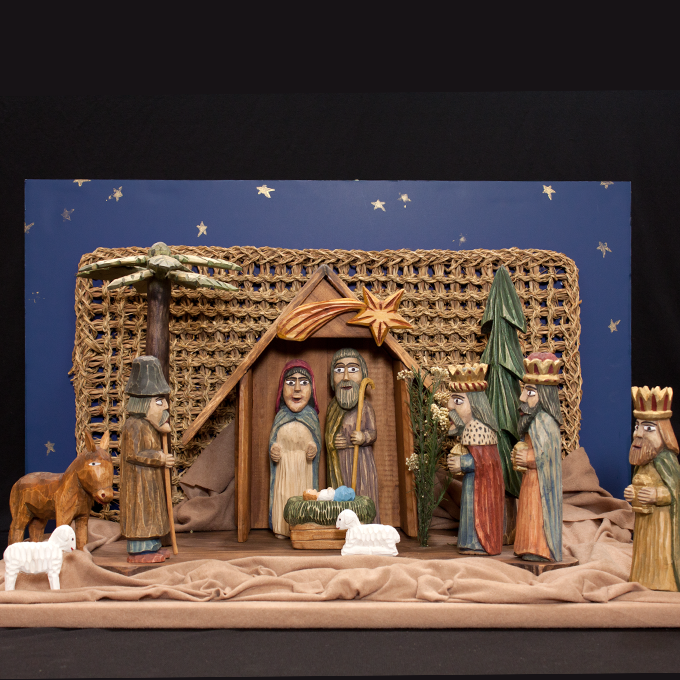
Bulging Eyes
Unknown artist
Figures carved in wood ordinarily inspire a sense of well-being and peace. They feel warm and reassuring to the touch; they even have a pleasant odor. There is no reason why it should be different for this set. Although of unknown artist, it owes its existence to a famous woodcarver tradition of the southern region of Poland where the woods are dense and the winters are long. During this period of forced immobility, many a farmer took up carving and became a master of the penknife. A thriving folk art developed. But look at the faces. Isn't there something unsettling there, which may contradict what has been said so far? The faces have bulging eyes, worse, they seem like piercing eyes x- raying the onlooker. All at once these little figures seem to close in on the innocent visitors and threaten them in silent accusation. In fact, these big eyes are a symbol of fixed and undisguised rapture. In the language of popular art, they are bulging in wonderment and eager to pierce the mystery before them.
– ML.0105.07
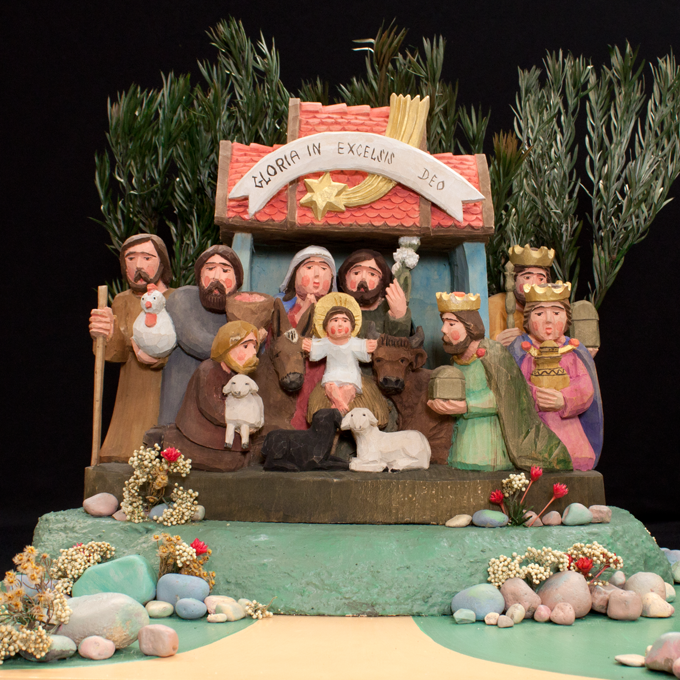
Family Portrait
S. Apriasz
This wood carved nativity from Cracow reminds us of a family portrait: the Holy Family with kings, shepherds and animals arranged in a close knit group under the aegis of a Gloria banner and a star. The plumb little figures with their broad faces and red cheeks are messengers of good health and prosperity. Their gifts are plentiful, lamb and rooster well-fattened, pots and coffers filled to the brim. Is the company of Jesus a warranty for good health and a fat wallet? Christmas representations of this kind originated mostly with the simple people of rural regions. Their images and sculptures reflected not so much what they had and who they were, but rather their needs and ambitions. It seems like a legitimate ambition to be part of the family portrait together with Jesus, Mary and Joseph. And if Jesus is the Savior of the whole human person, why shouldn't we portray those who are close to him with the red cheeks of good health.
– ML.0125.30
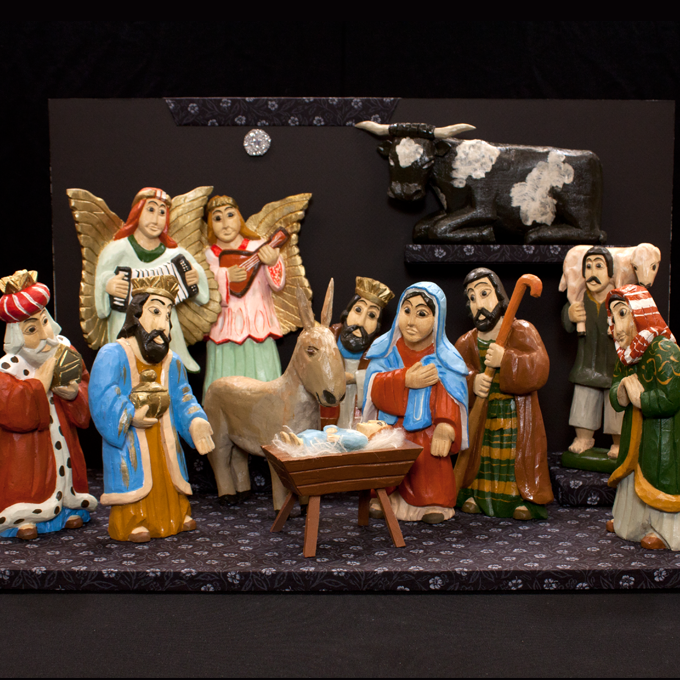
A Sense of Humor
Adam Wydra
Polish nativities come with a sense of humor. Heads are nodding in all directions, eyes are laughing, and looking at the angel with the accordion you can almost hear the sound of the Polka. The whole scene is dancing for joy or, at least, gives this impression. Even the ox seems to enjoy his lofty position.
– ML.1120.06
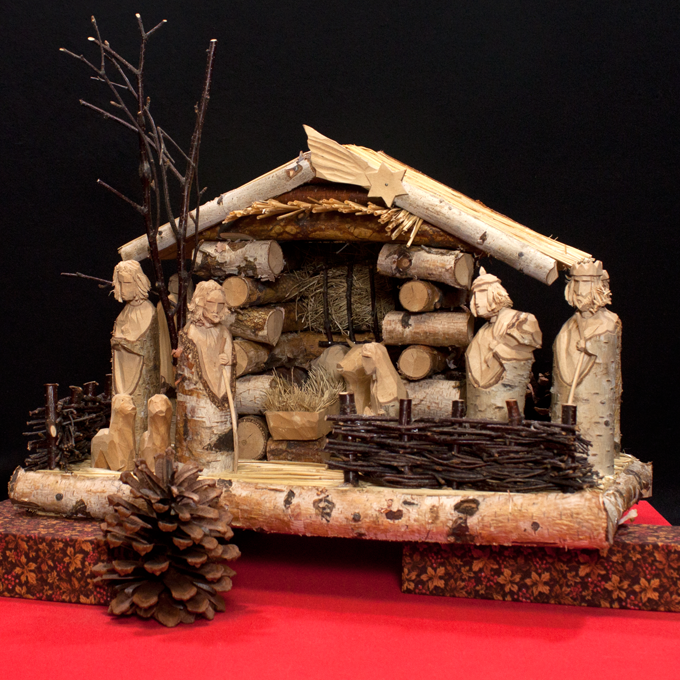
New Creation
Unknown artist
Incarnation is the beginning of a new creation, so we say, from which we shall emerge with the new face of brother or sister in Christ. But this crude rendering of the nativity from Zakopane (Poland) seems hardly fit to model new creation. The pieces of birch wood representing figures and barn appear to be all of the same unfinished cut. Only the faces bear promise of new creation as they timidly emerge from formless trunks.
– ML.0128.24
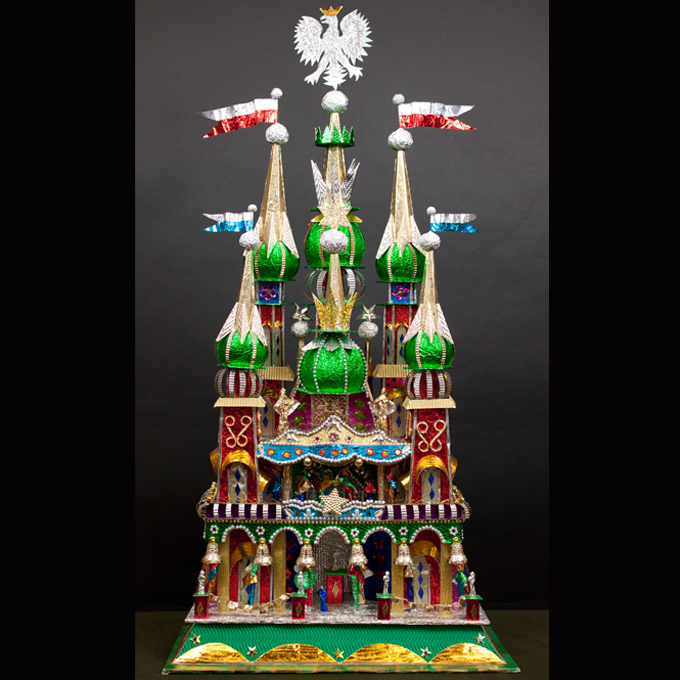
Polish Nativity Set from Krakow
Szopka
The characteristic feature of the Cracovian Christmas crib or Szopka is a fanciful blend of the Bethlehem miracle and the atmosphere and charm of Krakow as exhibited through its art and architecture. The meticulously detailed, imaginative structure or church facade creates a setting fit for the presentation of the Nativity of the Son of God. Its origins can be traced to early 19th century wandering crib shows, which utilized puppetry to present Gospel stories interspersed with secular scenes. The shape of the Cracovian Christmas crib is tall, slender, multi-leveled, pinnacled, and reminiscent of Krakow's architecture. The richly ornamented structure is built with a variety of light-weight materials, namely tinfoil and cardboard. Traditionally, the Nativity is placed on the top floor, while below, a combination of biblical stories and Polish legend and history is displayed
– ML.0145.02, ML.2652
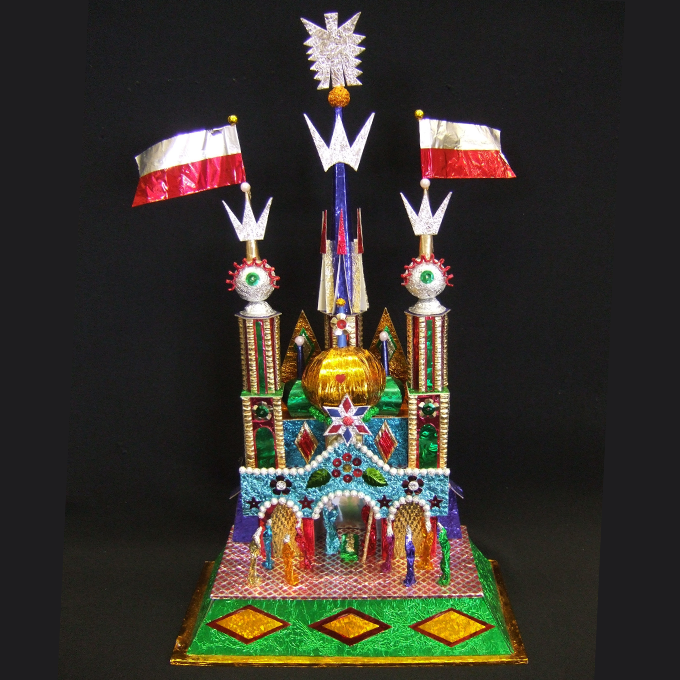
Szopka
– ML.2179
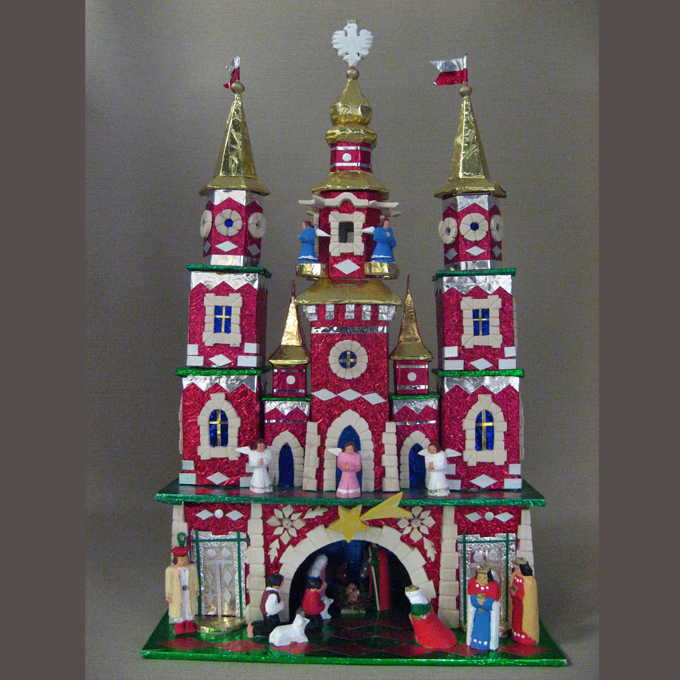
Szopka
– ML.4306
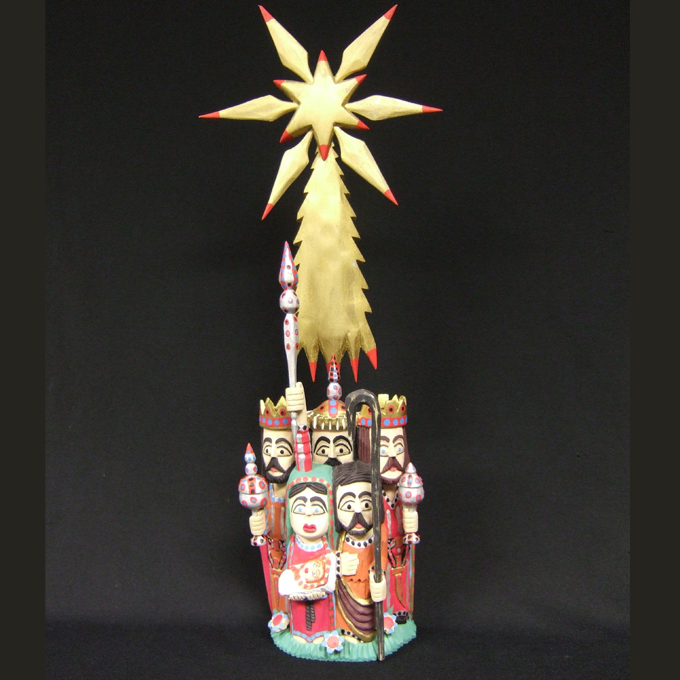
The Message of the Star
Jan Skora
This Nativity consists of two elements: the tightly clustered group of Holy Family and Magi, carved from a single block of wood, and the towering comet with its twice six-point star and majestic tail. The whole piece belongs to the famous woodcarving tradition of southern Poland. This thriving folk art is known for its compact figures, childlike traits and wide open eyes. In our case, the Nativity set is a touching monument to holy awe and wonderment. In fact, the big eyes are expression and symbol of fixed and undisguised rapture, sparked by the mystery lying before them. But it is the star that reveals the true meaning of the Christmas event. In the Nativity tradition the star is not only the faithful guide of the Magi, it also has the role of revealing Christ's divinity .It has usually eight points, signifying the eighth day of creation or the first day of the new creation in Christ. This star has (twice) six points symbolizing six planets. The seventh, the sun, is in the center of the star. It stands for Jesus Christ, the very center of
creation.
– ML.0120.10

